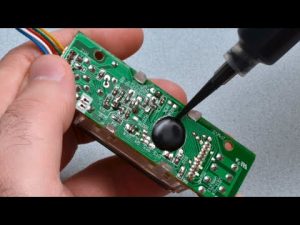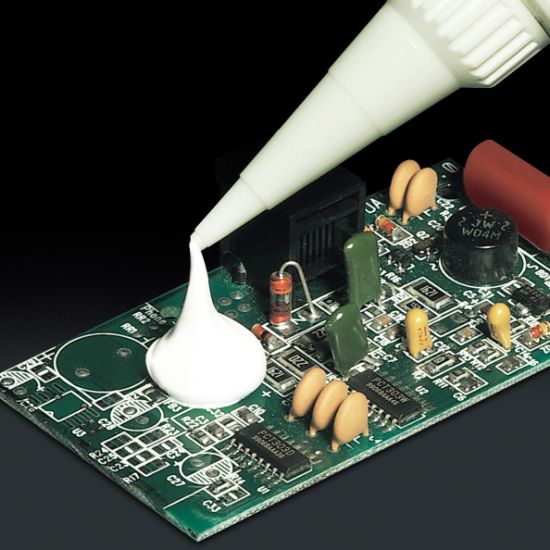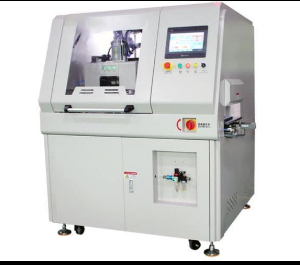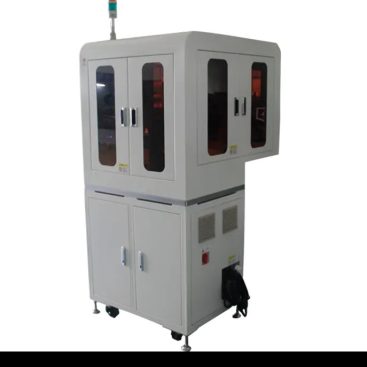

PCB Coating Glue-SMTlink
Your best business associate browses SMTlink Equipment items if you’re looking for the best PCB Coating Glue solutions for your manufacturing requirements
To get things going, let’s first define conformal coating for a PCB. A PCB is covered in a thin polymeric film known as a conformal coating to shield the board and its components from corrosion and the elements. To shield all solder joints, electronic component leads, exposed traces, and any other regions that are susceptible to corrosion, the film perfectly adheres to the shape of the PCB.
Why then would you require conformal coating? In essence, you are extending and improving a PCB’s life span when you apply a conformal coating to it. Applying a conformal coating can enable designers to meet and surpass standards by allowing for larger voltage gradients and closer track spacing. On the other hand, having a device malfunction can have detrimental effects. Your equipment must therefore be adequately protected from the elements. These factors can consist of wetness, salt spray, chemical exposure, and fluctuations in temperature.
PCB Coating Glue
Your best business associate browses SMTlink Equipment items if you’re looking for the best PCB Coating Glue solutions for your manufacturing requirements.
You may rely on us because we have over 40 years of experience in the electronics sector and a distinct market-leading position. We are aware of the market’s rapid developments and are well-established locally in more than 50 nations to support our clients. We provide technologies that are reliable in the long run and are committed to our goals and our customers.
Traditional conformal coating application techniques, such as dipping and air spraying, are pricy in terms of materials and labor. Costs have gone up because solvent-free conformal coating ingredients are more expensive.
Instead of conformal coating operations, PCB coating manufacturers must balance throughput, materials, and labor investments, while addressing regulatory and environmental concerns. SMTlink selective conformal coating equipment systems have provided many benefits for manufacturers at every level of production, from batch to high-volume, in-line processing.
The fundamental components of practically all contemporary electronic gadgets are printed circuit boards or PCBs. As a result, they are ubiquitous and may be found in many different places, including smartphones, automobiles, and aircraft. These boards must be protected from any contaminants that could affect their effectiveness by using conformal coating because they are crucial to the operation of many electronic devices, especially those that demand great dependability.
In this post, we’ll go over the many kinds of conformal coating, how they may protect PCBs, and how to pick the right kind for a particular PCB.

What Is PCB Conformal Coating?
To get things going, let’s first define conformal coating for a PCB. A PCB is covered in a thin polymeric film known as a conformal coating to shield the board and its components from corrosion and the elements. To shield all solder joints, electronic component leads, exposed traces, and any other regions that are susceptible to corrosion, the film perfectly adheres to the shape of the PCB.
Why then would you require conformal coating? In essence, you are extending and improving a PCB’s life span when you apply a conformal coating to it. Applying a conformal coating can enable designers to meet and surpass standards by allowing for larger voltage gradients and closer track spacing. On the other hand, having a device malfunction can have detrimental effects. Your equipment must therefore be adequately protected from the elements. These factors can consist of wetness, salt spray, chemical exposure, and fluctuations in temperature.
PCB Conformal Coating Types, Advantages, and Disadvantages
After establishing the basics of what conformal coatings are, let’s examine some of their various varieties and evaluate the advantages and disadvantages of each. The characteristics, benefits, and drawbacks of each type should be taken into account while choosing a PCB coating.
Acrylic (AR)
The most common sort of conformal coatings is made of acrylic because they are flexible and easy to apply and remove.
Advantages:
• Simple to apply and remove
• Simple repairs and rework
• There was no shrinkage after curing.
• Inexpensive
Disadvantages:
• Low resistance to chemicals and solvents
• low resistance to abrasion
• battles in hostile environments
• High-temperature applications are not ideal
Epoxy Resin (ER)
Epoxy conformal coatings are often sold as a two-part mixture that starts to fix as soon as it is mixed. Single-component coatings can be thermal.
Advantages:
• Waterproofness and resistance to abrasion
• very high chemical resistance
• a strong resistance to dampness
• robustness in difficult conditions
Disadvantages:
• Uneasy to remove
• shrinks as a result of treating
• For rework or repair, you must need a soldering iron.
Silicone Resin (SR)
Single-component silicone resin conformal coatings are frequently utilized on devices that will operate in a wide range of temperatures.
Advantages:
• acceptable in very high temperatures
• outstanding resistance to dampness and corrosion
• excellent chemical resistance
• clings to the majority of PCB parts and materials
Disadvantages:
• extremely challenging to remove
• needs to be removed using harsh abrasion and powerful chemical strippers.
• only small-scale fixes
Parylene (XY)
Chemical vapor deposition is used to apply parylene conformal coatings to surfaces. The procedure converts the perylene into a gas, which is then heated and placed in a vacuum chamber in which it polymerizes into a coating that is applied over the electronics.
Advantages:
• resistance to the best solvents and highest temperatures
• Clear and without color
• Forms at ambient temperature and doesn’t need time to fix
• strong dialectic ability
Disadvantages:
• Difficult to remove and require abrading off
• Not recommended for prolonged outdoor exposure
• specialized tools required for application
PCB Conformal Coating Material Selection Factors
What is the ideal conformal coating for your PCBs? There are numerous factors to consider when choosing the best conformal coating for a PCB because there are so many options to pick from. The main three factors to take into account when choosing your conformal coating are outlined below.
Using Products
The intended application of your product should be taken into account as the first and most important factor. The key to choosing the optimum PCB conformal coating for your products is matching the type of conformal coating based on its benefits and drawbacks to the use of your product.
An illustration would be if you wanted to guard against prolonged moisture exposure. The ideal choice for you may be a perylene coating based on the features of all conformal coatings. Perylene coating is renowned for its ability to ward off moisture, and some coatings even offer protection from liquid submersion.
Range of temperatures
You should have a firm idea of the minimum and maximum temperatures your product will be subjected to before choosing the type of coating for it. Temperature ranges are a very significant element to consider. It may result in PCB damage if this is not taken into account. In the example that follows, we’ll discuss how temperature extremes affect the coating type that is chosen.
The usage of PCBs in aviation is one instance where temperature extremes must be taken into account. When an airplane is in the air, it may experience temperatures as low as -65 degrees Celsius (-85 degrees F) and as high as 100 degrees Celsius (212 degrees F) when it is on the runway. The only solution that can withstand prolonged use at this range is silicone coatings.
Environmental Elements
You may choose the optimal conformal coating for your PCBs by considering the various environmental variables that conformal-coated PCBs may be subjected to. Consider putting a PCB in protective housing that is only partially sealed. Condensation and humidity would then be the only environmental conditions that would need to be taken into account. The following is a list of some other frequent environmental elements that need to be taken into account:
- Extreme humidity
- Salt-spray environments
- Corrosive gasses
- Immersion environments
Services for Conformal Coating from SMTlink
If you are attempting to find the best conformal coating for your PCBs while looking for conformal coating services, look no further. To guarantee that all of your PCBs are adequately protected, SMTlink provides conformal coating services in perylene, acrylic, urethane, silicone, and epoxy. As a business with over 20 years of experience and a pioneer in the industry, our staff is dedicated to providing the best services with each order.
Contact us right now for more details about our services, advice on choosing the appropriate conformal coating for your PCBs, or to get a quote.
What benefits may you expect from automated selective conformal coating?
Consistency in Application:
The ability to dispense conformal coating with incredibly high accuracy and repetition is made possible by automated selective conformal coating machines fitted with specialized conformal coating nozzles.
Lower Factory Errors
Robotic conformal coating application enables producers to lower the chance of manufacturing errors and produce higher-quality goods that are less prone to failure.
Decreased Labor:
Inefficient and very labor-intensive, manually spraying, brushing, or dipping printed circuit board assemblies (PCBAs) is a common practice in medium- to high-volume electronics manufacturing.
Cost-Savings:
Automating conformal coating application processes initially costs more than human processes. The combined savings from reduced labor, reduced material waste, and higher product output, however, effectively work to show a speedy return on investment.
What exactly does a conformal coating machine do?
Conformal coating equipment is an industrial robot system that automatically performs the application of conformal coatings to the surfaces of printed circuit board assemblies (PCPCBA). These robot systems are designed for precision and applying highly repetitive conformal coatings where consistency and quality are critical for ensuring the long life of PCBAs.
How is conformal coating sprayed?
To order to achieve the desired coating, conformal coating is manually applied to the surface of printed circuit board assemblies (PCBAs) using a conformal coating hand spray gun, or, in the ideal case, using a specialized automated robotic system that is outfitted with a combination of spray valves.
What accomplishes conformal coating?
The PCBA’s electrical components are protected by the conformal coating, which also helps keep it from failing in its intended setting. There are numerous varieties of conformal coatings, and each is designed differently for various conditions including shock, dust, moisture, temperature, etc.




